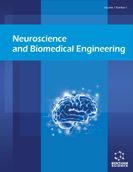Abstract
Background: How is intercultural understanding possible? As shown by hermeneutic theories of understanding, it is inevitable to interpret different cultures within our own cultural perspective regulating our understanding as a preconception. Nevertheless, this basic framework of our understanding is usually considered as strange, because we are so familiar with it that we are unable to grasp it. With the progress of intercultural interpretation, we begin to shed light on the horizons of both other cultures and our own.
Objective: However, how can we reflect on our own preconception? Hans-Georg Gadamer answers this question by arguing that the horizon of other ‘calls’ us to interrupt our horizon for a moment and enables us to distance ourselves from it. If so, why are we shocked to hear this unfamiliar call, though we still remain in our own horizon? Method: In order to answer this question, I consider some significant theories of such philosophers as Gadamer, Martin Heidegger and Vladimir Jankelevitch. Result: As the result of my consideration, I claim that we can hear the above-mentioned unfamiliar call in our own horizon because not only are we surrounded by the horizon of our culture, but we also transcend it at the same time. Conclusion: This implies that while belonging to our cultural community, we originally dwell in a primary and unlimited community (‘cosmopolis’) that precedes all of the actual communities. Furthermore, we can realize unconditional hospitality only when we are ‘cosmopolitan’.Keywords: Intercultural understanding, hermeneutics, unconditional hospitality, cosmopolis, Davidson's therapy.
Graphical Abstract
 2
2

